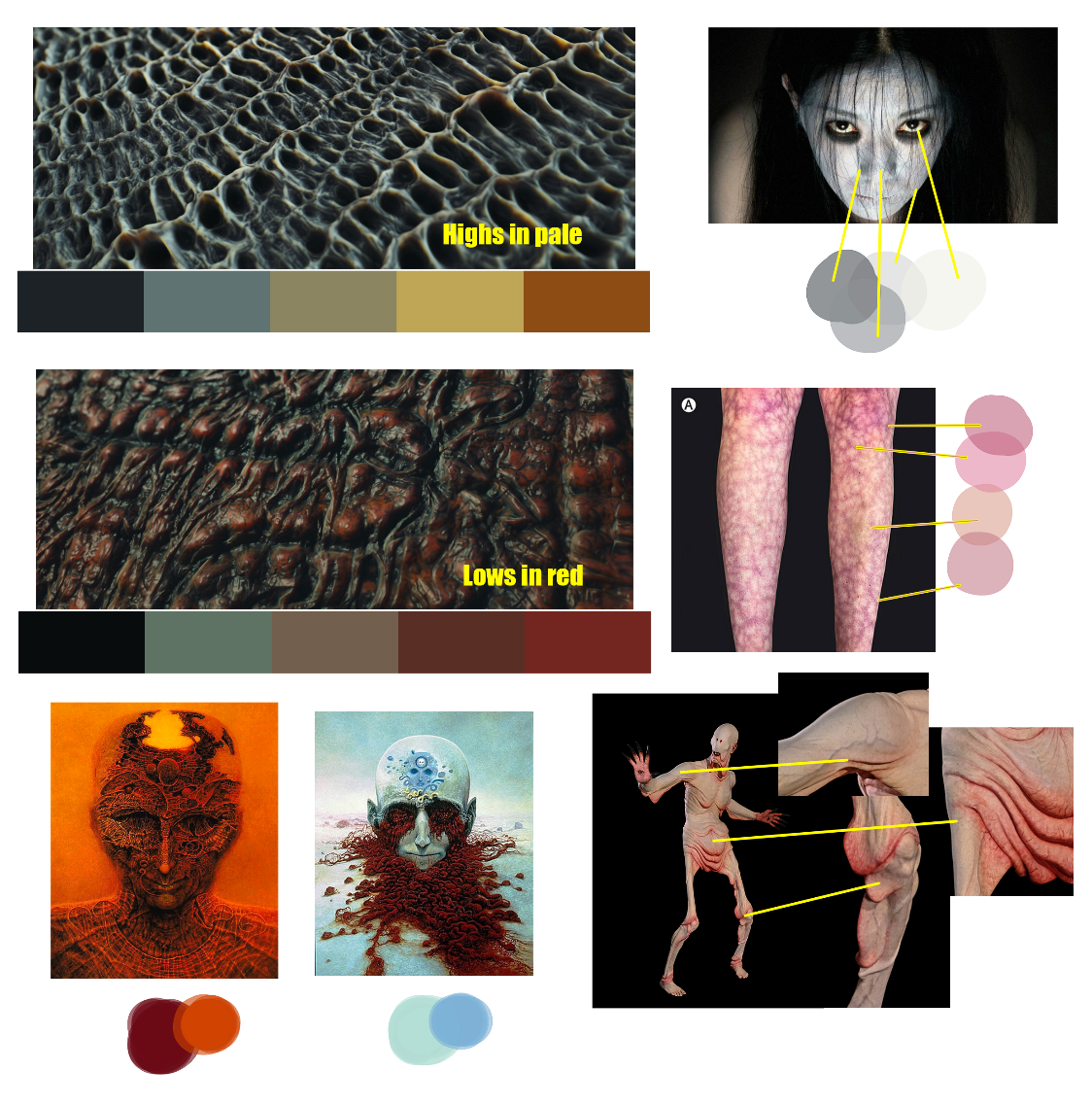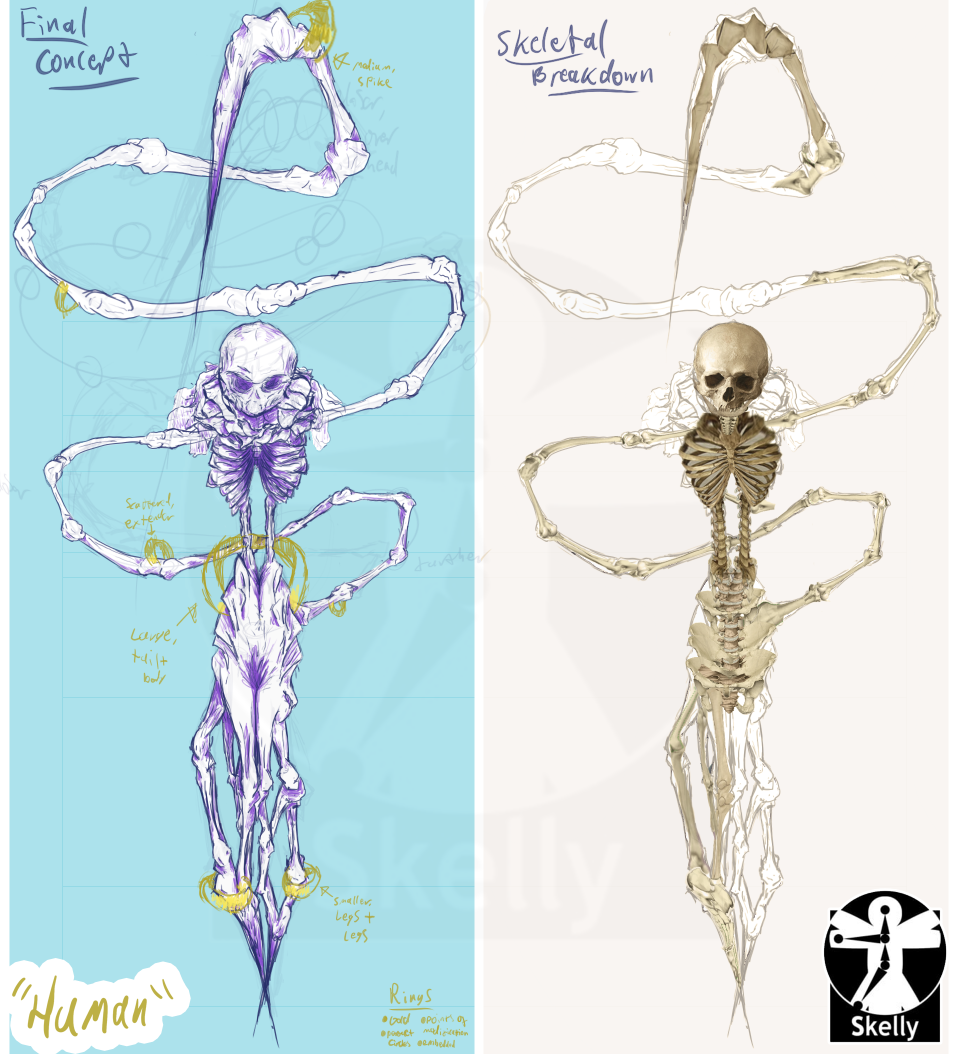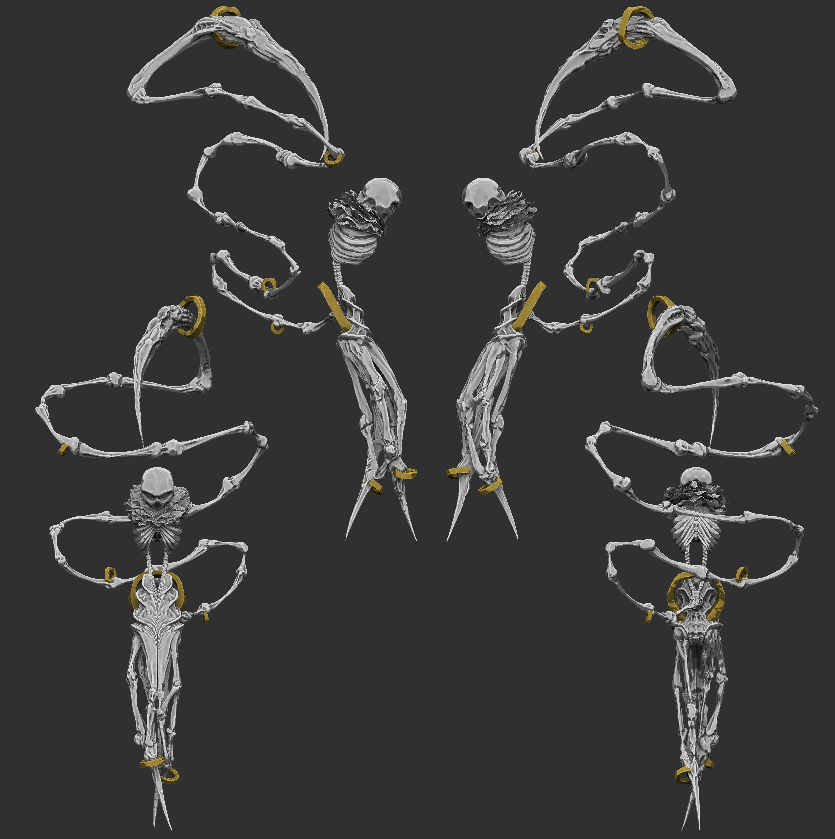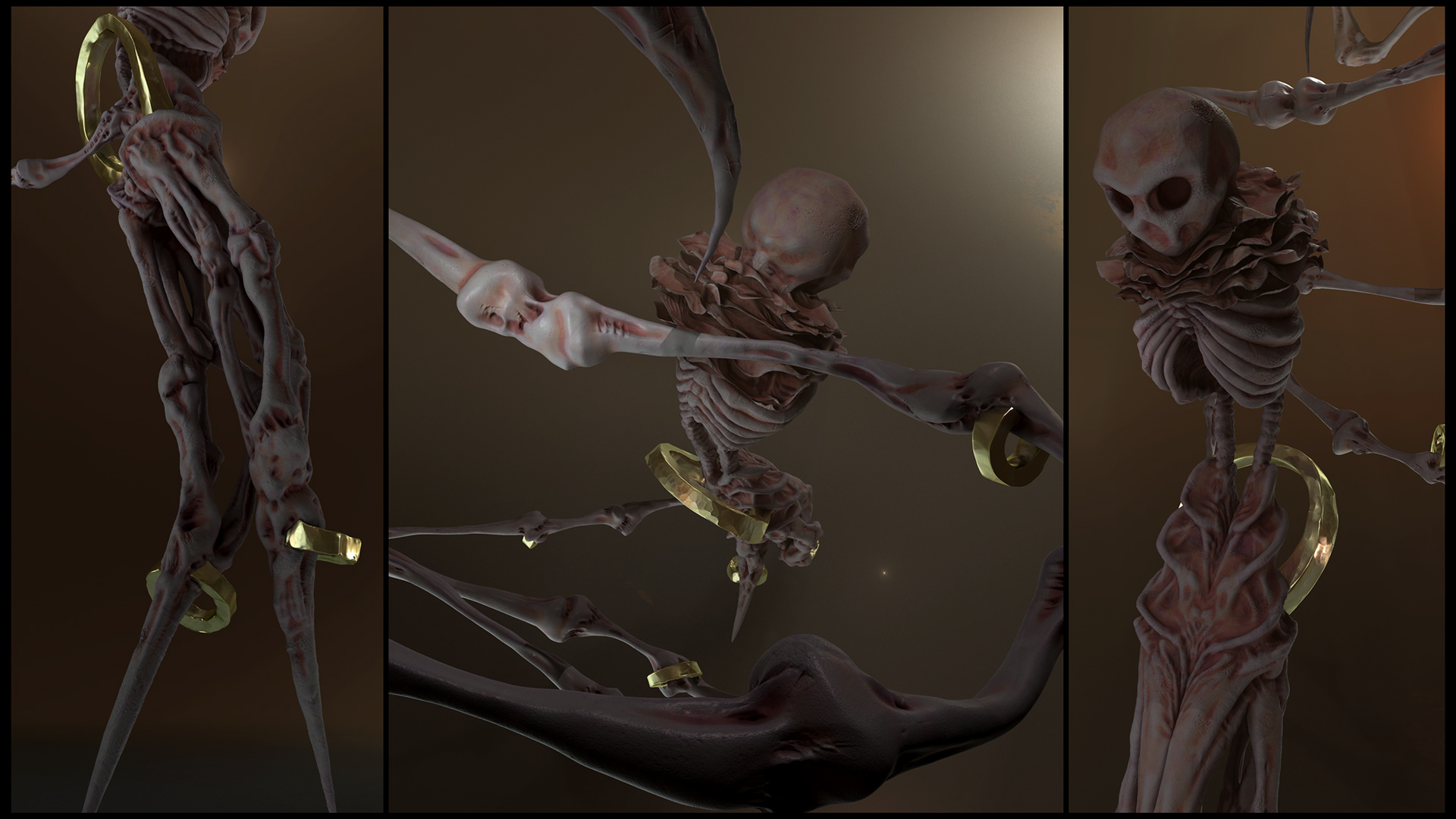BA (Hons) CGI/ Film Visual Effects/ Digital Arts Top up
Specialism – 2D Artist
Through this project I plan to display my artistic and technical merit as a CG Creature/Character Concept Artist.
To aid in understanding of my creature’s construction, I photo-bashed a rough skeletal structure together from photos of anatomical models and resources. This gives a deeper understanding of the construction and overall body composition to both my audience and myself as the artist. This is crucial for me to understand during the sculpting process, if I cannot understand where the bones and internal structures of this creature’s body are then I have no chance of sculpting gaunt and taught skin that highlights the fused-together anatomy of this “human”.
Taking a stylised yet realistic approach the skeletal structure posed the question: ‘How do you depict skeletal form that doesn’t exist anywhere in real-world nature?’ There is no instance of multi-jointed limbs or creatures with two spines quite like what I am aiming to depict in the natural world.
My opinion is that taking artistic liberty while keeping the art grounded in reality is a key feature of surrealist horror, “When it comes to the horror genre specifically its form is often a vehicle used to show our own ugliness.” (Derrington, 2020). As surrealism is based in the depiction of bizarre, dream-like imagery and dreams are formed in the human mind, the only base forms that surrealism could stand on are those that we see in the real world.
My opinion is that taking artistic liberty while keeping the art grounded in reality is a key feature of surrealist horror, “When it comes to the horror genre specifically its form is often a vehicle used to show our own ugliness.” (Derrington, 2020). As surrealism is based in the depiction of bizarre, dream-like imagery and dreams are formed in the human mind, the only base forms that surrealism could stand on are those that we see in the real world.
CONTACT ME
LinkTree: https://linktr.ee/skelly3d0
Linkedin: linkedin.com/in/sonny-kelly-89662a216/
Artstation: artstation.com/Skelly3d0
Instagram: instagram.com/Skelly3d0
Twitter: twitter.com/Skelly3d0
Rookies: therookies.co/u/Skelly3d0
Youtube: youtube.com/@Skelly3D0
“What I paint is above all else, a spiritual self-portrait of me.”
- Zdzisław Beksiński
- Zdzisław Beksiński


In initial my concept art I wanted to explore the human form and anatomy, starting from an incredibly loose exploration and honing in on what I find interesting and compelling in my sketches.
From adding and subtracting parts of a human, exploring overall shape and silhouette, allowing anatomy to warp and change with the sketch and keeping to a very loose and quick style of work, I discovered repeated features of interest in my exploration which I have been keen to explore.




... These features were the intrinsic keys to my design process, ensuring that I was creating designs that interested myself as an artist so that I didn’t loose the passion for the designs during the project. By later honing in on these key features in my Feature Highlight Moodboard (Figure 15) and picking out examples of work that fits my artistic vision, I was able to drastically reduce the time I spent experimenting with tweaks to my final design and instead was able to focus on the overall form of my work more intimately.
